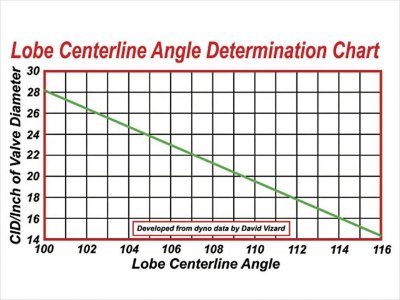HT413
Semi Pro Bowler
Hey fellas, just doing my normal evening engine research and I came across this excellent cam selection article from Popular Hotrodding. They suggest that overlap is the FIRST thing you need to figure on when selecting a cam and the next is LCA (LSA being another way of saying LCA).
http://www.popularhotrodding.com/tech/0607phr_camshaft_basics/viewall.html
Well, when you use their LCA chart, I come up with 103 for a street 440 with oem valve size (about the same for my 413).
Seriously, 102-103 LCA?? Most guys recommend 110 to 112 for big block mopars, though some cams like the whiplash go to 107. Does the long rod / high mopar rod ratio come into play here and require a longer LCA than the article suggests??? (Just guessing.) I know I'm not saying anything about my combo (though I've talked about it enough that you guys are probably sick of it). But the article suggests that this is good for any street / strip motor with that displacement and intake valve size.
What do you think?

Lobe Centerline Angle Determination Chart
"To use this chart, first establish the number of cubes in the cylinder per inch of valve diameter. To get this number, divide the engine displacement by the number of cylinders, then by the intake valve diameter..."
http://www.popularhotrodding.com/tech/0607phr_camshaft_basics/viewall.html
Well, when you use their LCA chart, I come up with 103 for a street 440 with oem valve size (about the same for my 413).
Seriously, 102-103 LCA?? Most guys recommend 110 to 112 for big block mopars, though some cams like the whiplash go to 107. Does the long rod / high mopar rod ratio come into play here and require a longer LCA than the article suggests??? (Just guessing.) I know I'm not saying anything about my combo (though I've talked about it enough that you guys are probably sick of it). But the article suggests that this is good for any street / strip motor with that displacement and intake valve size.
What do you think?

Lobe Centerline Angle Determination Chart
"To use this chart, first establish the number of cubes in the cylinder per inch of valve diameter. To get this number, divide the engine displacement by the number of cylinders, then by the intake valve diameter..."















